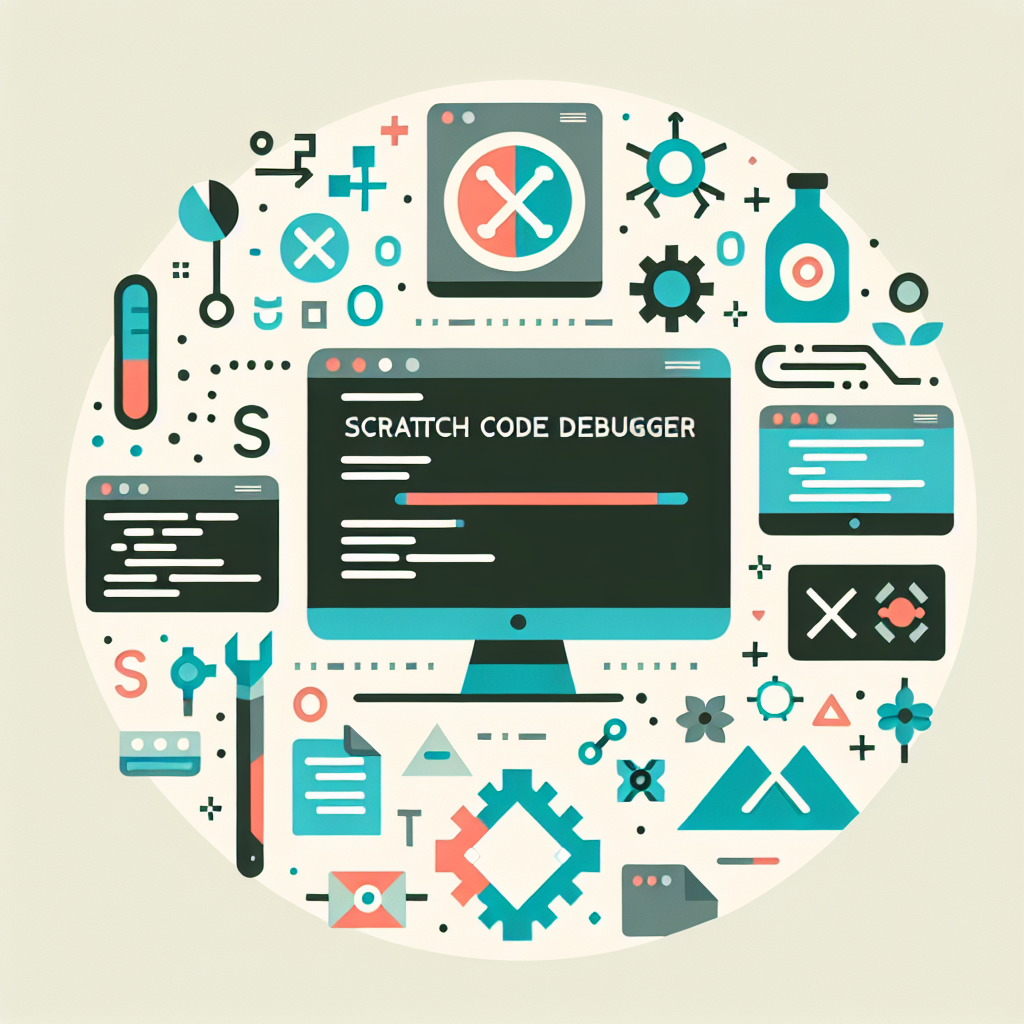Master Debugging: Scratch Code Debugger Tool Online
Debug your Scratch projects with ease using our Scratch Code Debugger. Enhance performance, identify errors, and streamline your coding process effortlessly.
Code to Debug
Debug Results
Output will appear here...
The Scratch Code Debugger is an essential tool for educators and young programmers to seamlessly identify and fix coding errors in Scratch projects. This intuitive debugger enhances learning by providing real-time insights, promoting efficient problem-solving, and fostering a deeper understanding of programming concepts. Ideal for classroom use and self-paced coding lessons, it empowers users to refine their Scratch creations with ease.

Scratch Code Debugger: Enhance Your Coding Experience Link to this section #
The Scratch Code Debugger is an essential tool for educators and students working on Scratch projects. Designed to streamline the debugging process, it helps users identify and resolve coding errors efficiently. Understanding how to leverage this tool can significantly enhance your Scratch programming skills.
Key Features Link to this section #
- Real-time Error Detection: Instantly highlights errors in your Scratch scripts, allowing you to make corrections on the fly.
- Interactive Step-Through: Walk through your code line-by-line to understand the flow and pinpoint issues.
- Variable Watcher: Monitor variable states in real-time to ensure your program behaves as expected.
- Breakpoint Setting: Pause your code execution at critical points to examine and modify variables and scripts.
How to Use the Scratch Code Debugger Link to this section #
- Initiate Debugging: Open your Scratch project and activate the debugger tool from the editor menu.
- Set Breakpoints: Click on the script area to set breakpoints where you want the execution to pause.
- Step Through Code: Use the step-through function to navigate your code, observing variable changes and logic flow.
- Analyze Output: Use the console to view error messages and system outputs for deeper insights.
Best Practices Link to this section #
- Regular Checks: Incorporate debugging sessions regularly during your development process to catch errors early.
- Variable Monitoring: Keep an eye on key variables to ensure they reflect expected values at each stage.
- Documentation: Maintain comments within your code to provide context and facilitate easier debugging.
Additional Resources Link to this section #
For more advanced debugging techniques, you can explore the Scratch Wiki or visit MIT's Scratch Resources.
By integrating the Scratch Code Debugger into your workflow, you can enhance code quality, improve problem-solving skills, and cultivate a deeper understanding of programming logic.
Frequently Asked Questions
What is a scratch code debugger?
A scratch code debugger is a tool used to identify and resolve errors or issues in Scratch projects. It allows users to step through their code, inspect variables, and understand the flow of their program to fix bugs effectively.
How do I enable debugging in Scratch?
Debugging in Scratch is not explicitly available as a built-in feature. However, you can manually debug by using 'say' or 'think' blocks to display variable values and program flow at different stages. Additionally, you can use the 'pause' functionality to step through your code.
Can I use a third-party debugger with Scratch?
Currently, there are no widely recognized third-party debuggers specifically for Scratch. However, educators and developers often create custom debugging scripts or use educational strategies to teach debugging within Scratch projects.